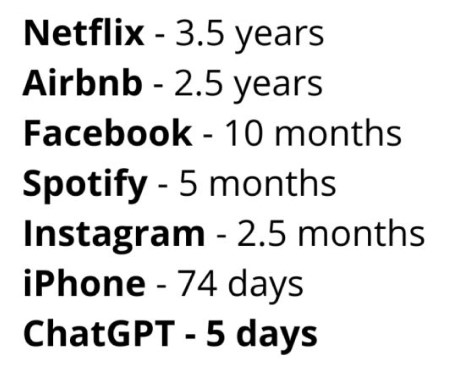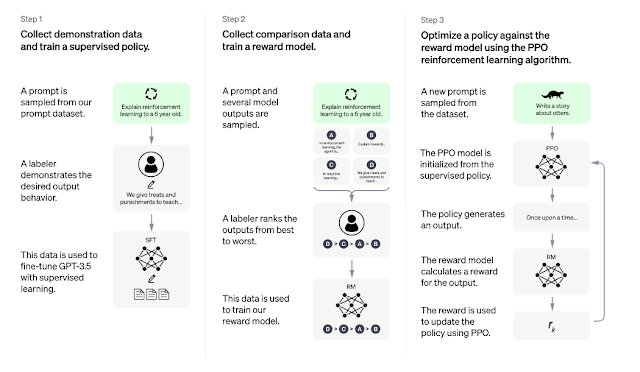Note: See at the bottom for more updates on this topic of ChatGPT.
ChatGPT, the general purpose chatbot released by the cutting-edge project OpenAI is making headlines everywhere. Let's just leave random ones for the record and to check it out later on.
ChatGPT is fine-tuned from a model in the GPT-3.5 series, which finished training in early 2022.
It was trained using Reinforcement Learning from Human Feedback (RLHF).
With all the buzzword, I tried a few simple questions:
What I learnt?:
- I have no idea about AI. This article is just to grasp some concepts.
- The fluency devised from answers all over the world is an illusion that stems from the combination of massive amounts of data, immense computing power, and novel processing techniques.
- One of the more popular use cases seems to be to generate essays. Though there is already Openai detector PoC.
- The robot is not connected to the Internet therefore his knowledge stops at 2021-09 (at the time of writing this article).
- The technology is impressive but still has its limitations, as seen above.
- Still far away from the Singularity (see below)
Intellectual property rights are sometimes hailed as the mother of creativity and invention. However, Marshall Brain points out that many of the finest examples of human creativity -from scientific discoveries to creation of literature, art, music and design - were motivated not bv a desire for profit but by other human emotions, such as curiosity, an urge to create, or the reward of peer appreciation. Money didn't motivate Einstein to invent special relativity theory any more than it motivated Linux Torvalds to create the free Linux operating system. In contrast, many people today fail to realize their full creative potential because they need to devote time and energy to less creative activities just to earn a living. By freeing scientists, artists, inventors and designers from their chores and enabling them to create from genuine desire, Marshall Brain's utopian society enjoys higher levels of innovations than today and correspondingly superior technology and standard of living.
Since we can't completely dismiss the possibility that we'll eventually build human-level AGI, let's devote this chapter to exploring what that might lead to. Let's begin ty tackling the elephant in the room: Can AI really take over the world, or enable humans to do so?
If you roll your eyes when people talk of gun-toting Terminator style robots taking over, then you're spot-on.: this is a really unrealistic and silly scenario. These Hollywood robots aren't that much smarter than us, and they don't even succeeded. In my opinion, the danger with the Terminator story isn't that it will happen, but that it distracts from the real risks and opportunities presented by AI. To actually get from today to AGI-powered world takeover requires three logical steps:
- Step 1: Build human-level AGI.
- Step 2: Use this AGI to create superintelligence
- Step 3: use or unleash this superintelligence to take over the world








No hay comentarios:
Publicar un comentario
Trata a los demás como te gustaría ser tratado.